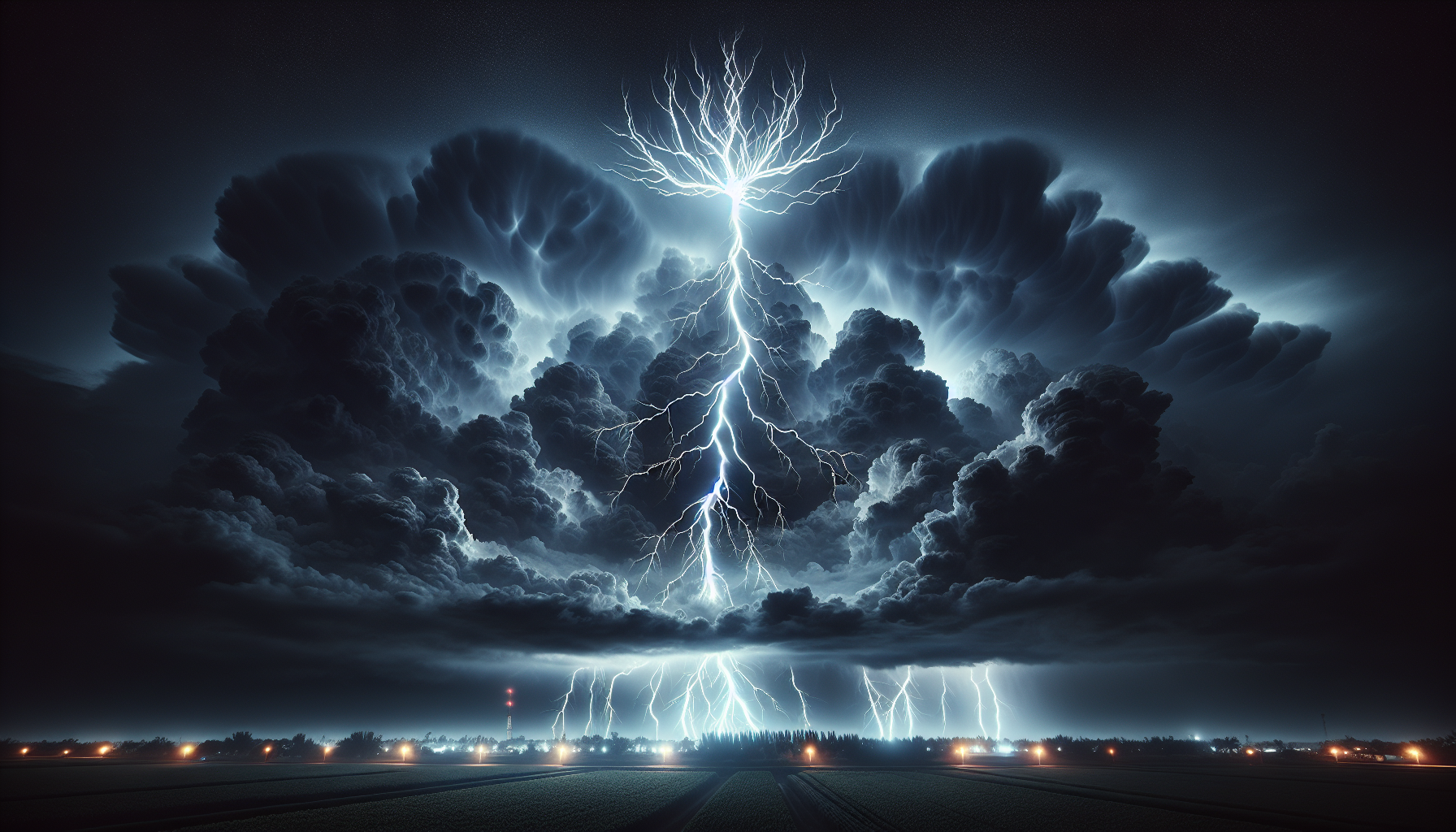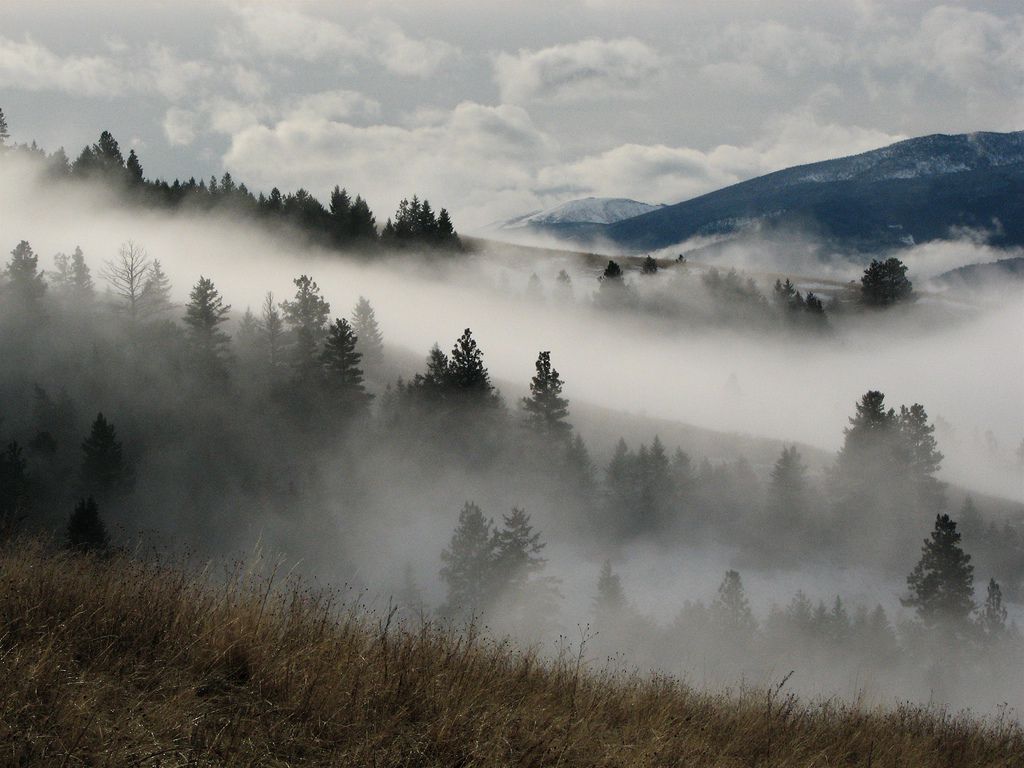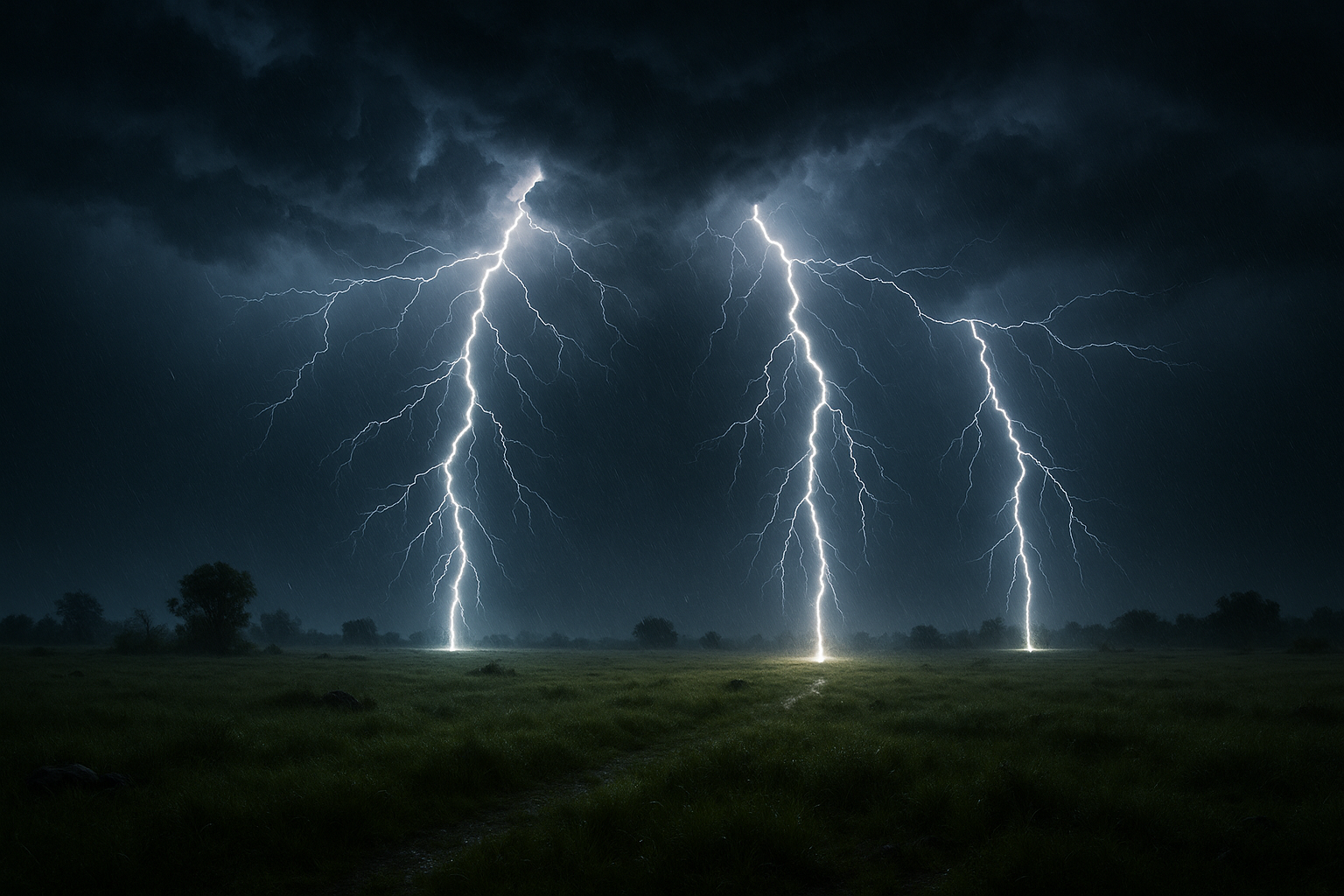In the grand tapestry of nature’s wonders, few phenomena captivate our imagination quite like lightning. It’s a dramatic display of power, a symphony of electric energy that has both inspired and awed humanity for centuries. But within this mesmerizing spectacle lies a lesser-known anomaly that challenges our conventional understanding: upward lightning. Unlike the typical downward bolts that streak from the heavens, upward lightning defies gravity, reaching skyward from the tallest structures on Earth. This intriguing reversal of the usual order is not only a captivating spectacle but also a profound scientific mystery that beckons us to delve deeper into the secrets of our planet’s atmosphere. ⚡
Our exploration of upward lightning begins with a journey into the heart of the storm. When conditions align just right, tall buildings, wind turbines, and other elevated structures become the unlikely birthplace of these upward strokes. But what triggers such an extraordinary event? Is it the architectural design, the atmospheric conditions, or perhaps an interplay of both that sets the stage for this reverse lightning to occur? By unpacking the mechanics behind these occurrences, we gain valuable insights into the complex dynamics that govern our skies. Moreover, understanding upward lightning not only enhances our scientific knowledge but also informs practical applications in fields ranging from meteorology to electrical engineering.
As we venture further into the realm of upward lightning, we encounter the cutting-edge technologies and methodologies employed by researchers striving to capture and analyze these fleeting phenomena. From high-speed cameras to sophisticated sensors, the tools at their disposal allow scientists to dissect these electrifying moments with unprecedented precision. What they’ve discovered is nothing short of remarkable. The characteristics of upward lightning differ significantly from their downward counterparts, offering a unique window into atmospheric electricity. These findings have profound implications, not only for the academic community but also for industries reliant on the resilience and safety of tall structures in lightning-prone areas.
But perhaps the most compelling aspect of upward lightning is its potential to reshape our understanding of nature’s interconnectedness. As we unravel the mysteries of these upward strikes, we are reminded of the intricate dance between the Earth’s surface and its atmospheric layers. In this light, upward lightning serves as a vivid reminder of the complex, often unseen forces that govern our world. It challenges us to look beyond the obvious, to question and explore the hidden mechanisms of our planet’s natural systems. As we embark on this journey to unleash the power of nature through the lens of upward lightning anomalies, prepare to be inspired, informed, and perhaps even transformed by the extraordinary insights that await. 🌩️
Understanding the Phenomenon of Upward Lightning
The phenomenon of upward lightning is a fascinating and less commonly understood aspect of atmospheric sciences. Unlike the typical lightning that travels from the sky to the ground, upward lightning originates from tall structures such as skyscrapers, communication towers, or wind turbines, and travels upwards into the atmosphere. This type of lightning is not just an intriguing natural occurrence but also a crucial subject of study due to its implications on structural safety and electrical systems.
Upward lightning is often triggered by a preceding lightning strike, known as a “triggering stroke,” which alters the electric field around tall structures. This alteration can cause the electric charge within the structure to discharge upwards, creating an upward-moving lightning flash. Understanding this process requires an examination of atmospheric conditions, the electrical properties of the involved structures, and the overall dynamics of thunderstorms.
Research into upward lightning has grown over the past decades, thanks to advancements in lightning detection technology and video documentation. Scientists use high-speed cameras and lightning detection networks to capture and analyze these events. These technologies have provided deeper insights into the conditions under which upward lightning occurs, helping to refine existing models and improve our understanding of lightning behaviors in various weather conditions.
The Mechanism Behind Upward Lightning
The mechanism of upward lightning is rooted in the interplay between atmospheric electricity and tall man-made structures. During a thunderstorm, the atmosphere becomes highly charged, with a significant accumulation of positive and negative charges. The ground typically holds a positive charge, while the base of the storm clouds is negatively charged, creating a potential for lightning strikes. In the case of upward lightning, tall structures provide a path of least resistance for the electrical discharge.
When a downward leader, a channel of ionized air, approaches the ground, it may cause the electrical field around tall structures to become extremely enhanced. If the electrical field is strong enough, it can initiate an upward-moving leader from the structure. This upward leader then meets the downward leader, forming a complete lightning channel. This phenomenon can occur without a preceding lightning strike but is more commonly initiated by one, particularly in environments with high lightning frequency.
Understanding this process is vital for improving safety measures for tall structures and enhancing our knowledge of atmospheric electricity. Researchers continue to study upward lightning to develop better predictive models and lightning protection systems, minimizing risks to infrastructure and personnel. By examining the conditions under which upward lightning occurs, scientists aim to provide comprehensive guidelines for industries affected by this phenomenon.
Comparative Analysis of Upward and Downward Lightning
To further explore the nuances of upward lightning, it’s essential to compare it with the more common downward lightning. Both types of lightning involve the discharge of electricity from the atmosphere to the ground, but their initiation and propagation differ significantly. The table below highlights some key differences between upward and downward lightning:
| Aspect | Upward Lightning | Downward Lightning |
|---|---|---|
| Initiation | Triggered by tall structures | Initiated by cloud-to-ground potential difference |
| Propagation | Moves from the ground upwards | Moves from clouds downwards |
| Frequency | Less frequent | More common |
| Typical Conditions | Occurs near tall structures | Occurs under thunderstorms |
These differences underline the unique challenges that upward lightning poses for understanding and mitigating its effects. For example, traditional lightning rods and protection systems are primarily designed with downward lightning in mind. However, the distinctive behavior of upward lightning necessitates tailored solutions to ensure adequate protection for structures at risk.
One of the most intriguing aspects of upward lightning is its unpredictability. While downward lightning follows more predictable paths, guided by the electric field between the ground and clouds, upward lightning is heavily influenced by the immediate environment of tall structures. This unpredictability makes real-time monitoring and advanced prediction models crucial for managing the risks associated with upward lightning.
Impact of Upward Lightning on Technology and Infrastructure
Upward lightning poses significant challenges for various industries, especially those that rely on tall structures or operate in regions with high lightning activity. The energy and power involved in an upward lightning strike can have severe implications for electrical systems, communication networks, and the structural integrity of buildings. Understanding these impacts is crucial for industries to develop effective mitigation strategies.
One of the primary concerns is the effect of upward lightning on power lines and communication towers. The high energy discharge can cause significant damage to electrical equipment, leading to power outages, equipment failures, and costly repairs. For industries such as telecommunications, where continuity of service is critical, these disruptions can have far-reaching consequences.
Another aspect of concern is the structural damage that can occur from upward lightning strikes. The intense heat and mechanical forces exerted by a lightning strike can weaken or destroy materials, posing a risk to the structural integrity of buildings and towers. Engineers and architects must consider these risks when designing and constructing tall structures, incorporating lightning protection systems that account for both downward and upward lightning.
Technological Advancements in Mitigating Upward Lightning
In recent years, advancements in technology have significantly improved our ability to predict and mitigate the effects of upward lightning. For instance, lightning detection networks provide real-time data on lightning activity, allowing for better monitoring and response strategies. These networks use a combination of ground-based sensors and satellite data to detect lightning strikes, offering valuable information on the location and intensity of lightning events.
Moreover, developments in materials science have led to the creation of more effective lightning protection systems. These systems, which include lightning rods, grounding systems, and surge protectors, are designed to safely channel the electrical discharge of a lightning strike, minimizing damage to structures and electrical systems. By integrating these systems into the design of tall structures, industries can significantly reduce the risks associated with upward lightning.
For a visual explanation of how upward lightning impacts tall structures and the technology used to mitigate these effects, watch this insightful video: Upward Lightning – National Geographic.
Future Directions in Upward Lightning Research
The study of upward lightning is a rapidly evolving field, with researchers continually uncovering new insights into the mechanisms and impacts of this unique phenomenon. As our understanding of upward lightning grows, so too does our ability to predict and manage its effects. Future research will likely focus on refining prediction models, improving mitigation technologies, and exploring the broader implications of upward lightning in the context of climate change and atmospheric science.
One promising area of research is the use of machine learning and artificial intelligence to analyze vast amounts of data collected from lightning detection networks. By leveraging these technologies, scientists can identify patterns and trends in lightning activity, leading to more accurate predictions and improved safety measures for at-risk structures. Additionally, these technologies can help identify the specific conditions under which upward lightning is most likely to occur, providing valuable information for industries and policymakers.
Another important direction for future research is the impact of climate change on lightning activity, including upward lightning. As global temperatures rise and weather patterns shift, the frequency and intensity of thunderstorms are expected to change, potentially altering the conditions under which upward lightning occurs. Understanding these changes is crucial for developing adaptive strategies that account for the evolving risks associated with upward lightning.
Researchers are also exploring the potential applications of upward lightning in other fields, such as renewable energy and atmospheric chemistry. For instance, the electrical discharge from upward lightning could be harnessed as a source of energy or used to study the chemical reactions that occur in the atmosphere during a lightning event. These interdisciplinary studies promise to expand our understanding of upward lightning and its broader implications.

Conclusion
Conclusion: Unleashing the Power of Nature: Exploring Upward Lightning Anomalies
In this exploration of upward lightning anomalies, we’ve traversed a fascinating and electrifying frontier of atmospheric science that continues to intrigue researchers and enthusiasts alike. Our journey began with a comprehensive overview of what upward lightning is, distinguishing it from the more familiar downward lightning phenomena. This distinction is crucial as it underpins much of the subsequent exploration and analysis in this field.
We then delved into the mechanisms that drive these spectacular natural events. Unlike the typical downward lightning that originates from cloud-to-ground discharges, upward lightning often begins from tall structures, such as skyscrapers and towers, reaching upward into the sky. This unique behavior is triggered by strong electric fields that form during storms, which can initiate a leader that propagates upward. Understanding these mechanisms not only enriches our fundamental comprehension of meteorological processes but also has significant implications for designing and protecting infrastructure.
One of the pivotal discussions in the article centered around the technological advancements and methodologies employed to study upward lightning. High-speed cameras, electromagnetic sensors, and radar technologies have become instrumental in capturing and analyzing these elusive events. The data collected through these means provide invaluable insights that enhance our understanding of storm dynamics and lightning behavior. Such technological interventions are imperative for advancing scientific inquiry and for developing predictive models that could mitigate risks associated with lightning strikes.
The exploration further extended into the potential impacts of climate change on lightning phenomena. As global temperatures rise, there is an increasing concern that storm patterns and intensities may alter, potentially leading to more frequent and intense lightning activity. This highlights the urgency of integrating lightning research into broader climate models to anticipate and adapt to changes that could affect both ecosystems and human infrastructure.
Moreover, the article shed light on the safety implications tied to upward lightning. Given that these events are often associated with tall structures, there are direct risks to human life and property. Emphasizing the importance of improved lightning protection systems and strategic urban planning can significantly reduce these risks. Additionally, increased public awareness and education on lightning safety can empower communities to take proactive measures during storm conditions.
In reinforcing the significance of the topic, it is evident that upward lightning is not merely a scientific curiosity but a natural phenomenon with profound implications for environmental science, public safety, and engineering. The intersection of these fields underscores the multidisciplinary nature of addressing lightning-related challenges and the necessity for continued research and collaboration.
As we conclude, it is essential to acknowledge the inherent power and unpredictability of nature encapsulated in phenomena like upward lightning. They serve as a reminder of the dynamic and interconnected systems that govern our planet. The exploration of upward lightning anomalies is a testament to human curiosity and the relentless pursuit of knowledge, driving us to unravel the mysteries that nature presents.
We encourage readers to reflect on the insights gained from this article and to engage further with the topic. Whether through discussion, sharing with peers, or applying this knowledge in practical contexts, your involvement is crucial. By fostering a community of informed and proactive individuals, we can collectively enhance our understanding and resilience against the challenges posed by natural phenomena. 🌩️
For further reading and resources on upward lightning, consider exploring the following links:
1. National Oceanic and Atmospheric Administration (NOAA) on Lightning Science: NOAA Lightning Science
2. The National Weather Service’s guide on lightning safety: NWS Lightning Safety
3. Research papers and articles from the American Meteorological Society:
These resources offer a wealth of information for those keen to delve deeper into the science and implications of lightning phenomena.
Toni Santos is a visual storyteller and artisan whose creations celebrate the poetry of the natural world. Through his thoughtful artistic lens, Toni captures the elegance of botanical forms, transforming them into meaningful expressions of symbolism, resilience, and timeless beauty.
His journey is deeply rooted in a passion for flora and the mysteries they carry. From the shape of a petal to the curve of a vine, each design Toni brings to life reflects a deeper narrative — one of growth, transformation, and harmony with nature. Whether crafting symbolic floral jewelry, enchanted botanical illustrations, or seasonal visual studies, Toni’s work evokes the quiet magic found in Earth’s most delicate details.
With a background in handcrafted artistry and visual design, Toni blends technique with intention. His creations do more than decorate — they speak, often inspired by ancient meanings behind flowers, the cycles of the seasons, and the invisible bonds between nature and spirit.
As the creative voice behind Vizovex, Toni shares this botanical journey with the world, offering curated stories, handcrafted collections, and thoughtful articles that help others reconnect with nature’s symbolism and artistic essence.
His work is a tribute to:
The quiet power of flowers and their messages
The art of visual symbolism in everyday life
The beauty of slowing down to see what’s hidden in plain sight
Whether you’re an artist, a nature lover, or someone drawn to the deeper meanings behind the natural world, Toni welcomes you to explore a space where aesthetics meet soul — one petal, one story, one creation at a time.





